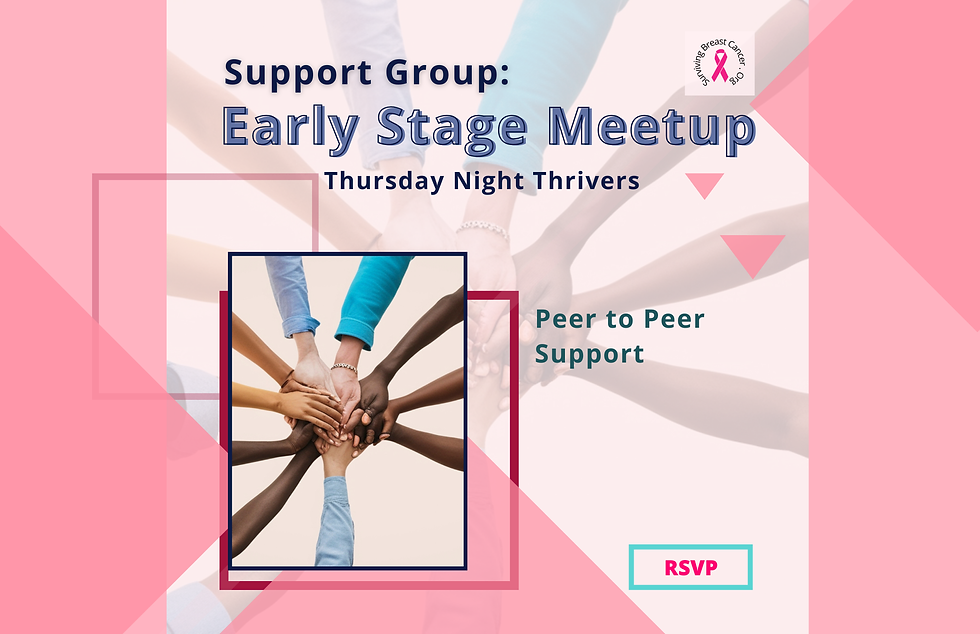This Genderless Disease
- Surviving Breast Cancer

- Aug 7, 2022
- 3 min read
Updated: Aug 18, 2025
By Rod Ritchie

This is the first of a monthly column which I hope will educate and inform readers. Over the coming months I’ll tell you how men I know handle diagnosis and treatment, how Stage 4 men struggle with the perpetual treatment, how the stigma of having this disease holds men back, and how early-stagers handle their fears of recurrence. While men make up only one percent (1%) of new cases, we are usually diagnosed with a later stage, and generally have a poorer prognosis. My underlying aim in all this advocacy work is to shine a light on a genderless disease which is burdened with too much pink hoopla by well-meaning charities in fundraising efforts. I’m well connected to the breast cancer community on social media, mainly Facebook and Twitter, and draw strength from the many women and men living with the disease and from those treating us.
My Story
It took me a few months to convince my GP that I needed a scan for an inflamed left breast, And, this despite having a recorded family history of breast cancer. I noticed the monographer’s eyes widen as she watched the monitor reacting to her ultrasound device. Sure enough, a biopsy a couple of days later confirmed Stage IIIB Inflammatory Breast Cancer. Neo-adjuvant treatment was what my MO jokingly called, “the kitchen sink”. Chemo lasted 18 weeks, and was one day each three weeks. There were three lots of FEC (Fluorouracil, Ellence, and Cytoxan) and three of Docetaxol. The Surgery that followed was extensive, since 2/23 lymph nodes tested positive, all those under my arm were removed along with the breast tissue. Pathology following surgery showed the tumors to be still active, so pCR was not achieved.
My surgeon was amused when I asked if there was any reconstruction. While it is possible to rebuild a facsimile of a guy’s breast, she explained, the lack of extra material makes it harder and actually inhibits the surgeon who is concentrating on removing the affected tissue, since cancer often travels further in male breasts. Following surgery, I started 33 radiation treatments, five a week for seven weeks. I have been taking the hormone blocker Tamoxifen for the past eight years. Three years ago, I was diagnosed with prostate cancer and the treatment, much simpler than for breast cancer, consisted of a robotic prostatectomy. I’m currently NED for both.
All this happened eight years ago when I was 64. Today, having closed down my internet publishing company, I’m pretty well a full-time advocate for men who find themselves dealing with breast cancer. I’ve been fortunate to have my patient advocacy efforts recognized and in 2018 when I was invited to attend the Project LEAD course in San Diego. The chance to meet up with so many patient advocates was very uplifting, while connecting with medical professionals, was just as important. In 2019 I was awarded a patient advocate scholarship from the Alamo Breast Cancer Foundation to attend SABCS, in San Antonio, the world’s premier breast cancer conference.
When I was going through treatment, my MO gave one fine bit of advice that has stood me in great stead. She said, never have any preconceived notions about any aspect of treatment. Only after I had handled the worst of it, did I understand her point. Worry and fear lie within us, and are naturally ever-present. Hope, based on logic and science, on the other hand, will keep us all in a better space.
---
About Rod Ritchie: Rod Ritchie is a Sydney-born writer, internet publisher, and breast cancer patient activist, living with breast and prostate cancers. Currently he’s NED for both. He’s president of the Male Breast Cancer Global Alliance, has a website at MaleBC.org and you can follow him on Twitter @malefitness
His articles for Health Union can be found here: https://advancedbreastcancer.net/author/traveltext










